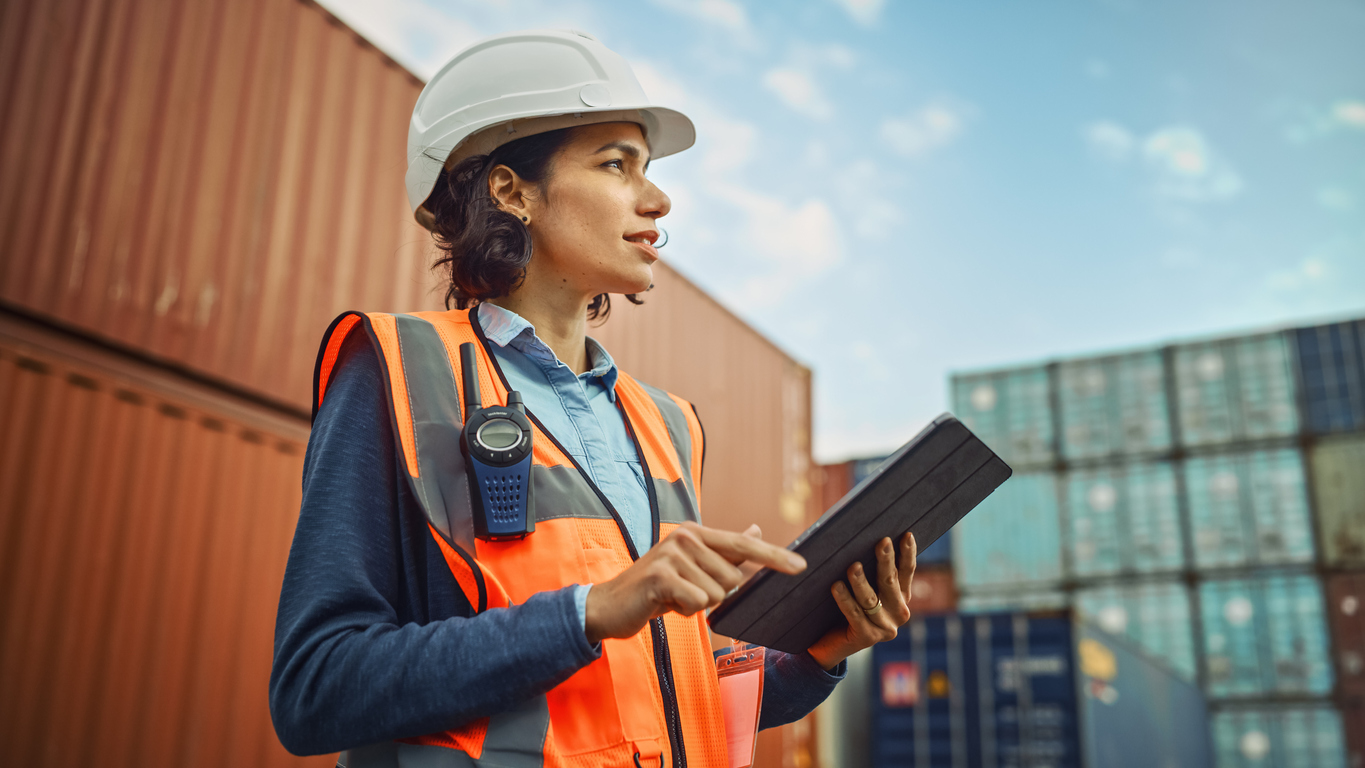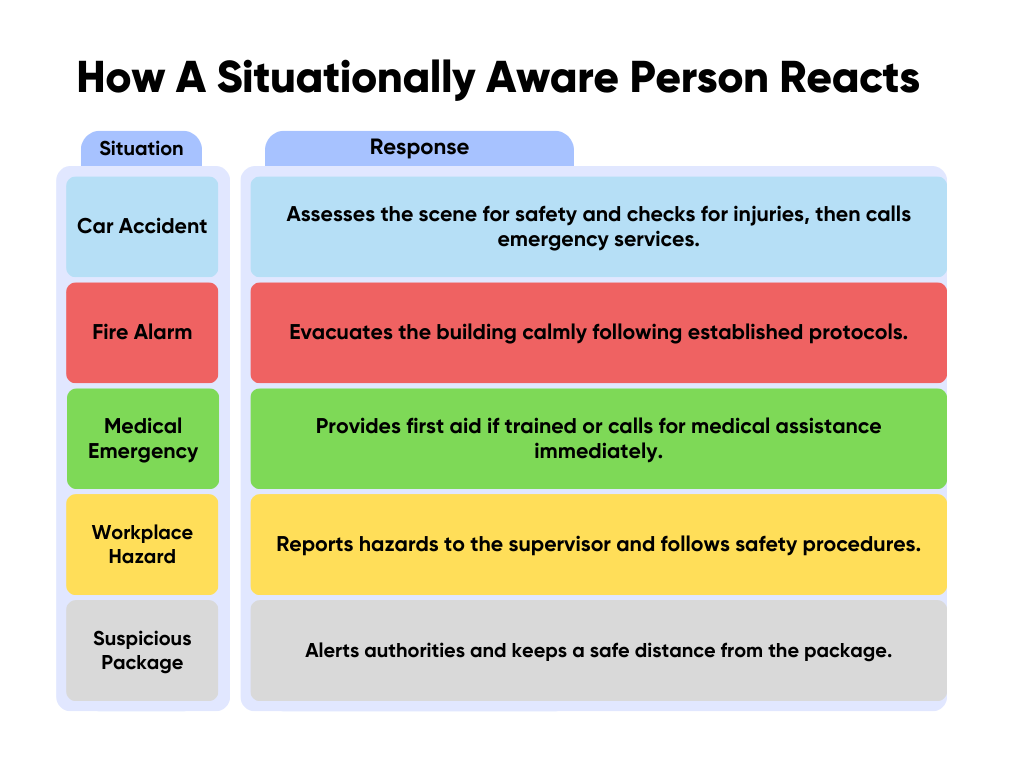Situational awareness is the ability to perceive, assess and respond effectively to a situation. It is an essential but a non-technical skill. People who are situationally aware gather information from their environment, understand what that information means and use it to decide the best course of action.
While many people have innate situational awareness others need a bit of practice to develop this skill. This is because some individuals are naturally vigilant of their environment. They have a strong sense of alertness, attention to detail, and a proactive approach to assessing and responding to potential risks or changes in their surroundings. They tend to notice even subtle cues and changes in their environment, making them exceptionally aware.
On the other hand, there are individuals with a carefree personality who are less observant of their environment. They may have a more relaxed and easygoing approach to situations, not paying as much attention to details or potential risks. Regardless of one’s personality and invidual traits, having situational awareness is crucial because it helps one in both personal and professional life.
Understanding Situational Awareness
The concept was first introduced in aviation and then in the military. Professionals who were operating in these high-risk environments were taught be more aware of their surroinding so they could protect themselves and their colleagues. Later on, the concept was embraced by those who were looking to tackle hazards in construction, mining, manufacturing and demolition.
In the late 1980s, psychologist Mica Endsley developed a model of situational awareness with three primary components: the perception of the elements in an environment within a volume of time and space, the comprehension of their meaning, and the projection of their status shortly after some variable has changed.

In simpler words, situational awareness has three parts. The first part is related to collecting information from all the sources regarding a situation. The second part relates to connecting that information and creating an understanding of what is happening. And in the third part, trying to predict the future scenarios.
Situational awareness as a concept has travelled from the front line of wars to construction sites as a way to deter threats and respond to emergency scenarios.
Three Levels of Situational Awareness
There are three levels of situational awareness, first is perception, second is comprehension, and third is projection.
1. Pereception
The first step is to be simply being aware of your surroundings. It means paying attention to what’s happening around you, understanding where you are, and noticing any important details or changes in your environment. This awareness forms the foundation for making informed decisions and reacting appropriately to different situations.
2. Comprehension
The second step is to go beyond simply noticing things. You must try to comprehend the significance of what you’ve observed. This understanding helps you make sense of the situation, assess any potential risks or opportunities, and decide how to respond effectively. In simple terms, it’s about grasping the “big picture” and the implications of what you see and hear.
3. Projection
The third step of situational awareness is being able to predict what might happen next. It’s like having a good sense of what could happen in the future based on what you’ve observed and understood about the current situation. This predictive ability helps you make smart decisions and take actions to stay safe or achieve your goals. It’s about thinking ahead and being ready for what’s coming.
Situational Awareness at Construction Sites
Effective situational awareness allows executives to see the past, the present, and what might happen next. These skills will help workers on the front lines of operations to do their jobs more efficiently. As a result, all types of businesses benefit from a common operating picture.
Situational awareness is extremely useful at construction sites to ensure the safety of workers and the success of projects. Construction professionals need to maintain a constant awareness of their surroundings, equipment operation, and the movements of their coworkers. This awareness in preventing accidents by identifying potential hazards and allows for quick responses to changing conditions.

For instance, a construction supervisor with strong situational awareness may notice weather changes and adjust work schedules accordingly, or a heavy equipment operator may spot a safety concern and take immediate action to avoid a mishap. In the construction industry, situational awareness is not just a valuable skill; it’s a critical component of keeping the workers safe and the project on track.
Five Ways to Improve Situational Awareness
The good news is that situational awareness is something that you can learn. In fact OSHA, the authority that oversees workplace safety places a great emphasis on developining this ability so that workers can protect themsvels and their colleagues. Here are some ways you can refine your ability to stay vigilant and proactive.
1. Get Rid of Cognitive Biases
Situational awareness is often hindered by cognitive biases, which are systematic errors that can cloud our judgement. The first step to improving your situational awareness is by getting rid of subconcious bias that can stop you from assessing situations.
Let’s say your are construction project manager, who is influenced by overconfidence bias, because you believe you are best at your job. This can make you over complacent and ignore critical safety violations such an unsafe scaffolding. Such attitude can result in a serious accident that could have been prevented.
By actively identifying and mitigating these biases, you can significantly enhance your situational awareness. Removing biases allows you to view situations objectively and make more informed decisions. To remove your cognitive biases, you should actively engage in self-reflection and critical thinking, as well as seek feedback from others to challenge your preconceived notions.
2. Ehance Your Communication Skills
The ability to communicate the perception of risk plays a key role in situational awareness. In case of an emergency, it’s important to bring everyone on the same page. And you must do this by effectively communicatiing each stage of the risk assessment or potential hazards to relevant individuals.
Whether it’s alerting the supervisor or informing your colleagues about some danger, you should speak in an assertive tone, using clear words to convey the urgency of the matter. You must not hesistate to ask for help if the situation needs more than one person’s attention.
Working on your communications skills by actively engaging in discussions or participating in public speaking can utimately improve your situational awreness.
3. Trust Your Intuition
Like many other living things, human beings have the ability to sense danger to some extent. So when you feel something is “off”, there’s a high chance that your subconscious mind is picking up on subtle cues or changes in your environment that your conscious mind has not yet processed.
This intuitive feeling can serve as an early warning system, urging you to stay alert and assess your surroundings more carefully. So you must learn to trust your gut when it comes to your personal safety and that of your colleagues.
4. Train for Emergency Situations
Many workplaces train new hires during the onboarding process to be more situaionally aware. The situational awareness training often include scenario-based exercises where employees are explained how to act during an emergency. These training sessions vary based on the industry.
During thrse trainings, you are told how to assess situations, communicate with colleagues and report potention risks to supervisors. Ideally, these sessions should allow you to not only learn about established protocols in a company but also workship ideas to deal with different realistic scenarios.
5. Work On Your Predicting Abilities
Predicting the actions of people around you can be particularly challenging, but it’s a crucial skill for anticipating potential risks. It’s something can go a long in enhancing your situational awareness.
By actively working on this skill, you can cultivate a heightened sense of vigilance without succumbing to constant fear and anxiety. You should envision scenarios where things could go wrong, such as a someone injuring themselves with a manual tool or encountering an unexpected hazard. This mental exercise enables you to outline responses and strategies in advance, improving your ability to automatically choose an appropriate reaction when faced with danger.
Improve Safety And Situtional Awareness
Situational awareness is the cornerstone of workplace safety. It equips you with the power to prevent accidents and save lives. By staying alert, informed, and proactive, you can secure your environment and make sure everyone around you is protected as well.
To make sure your workplace stays safe and accident free you can enroll in OSHA 10-Hour construction training, and the more detailed OSHA 30-Hour construction. Let’s work together to build a safer, more resilient workforce, where situational awareness leads the way to a brighter, accident-free future.



